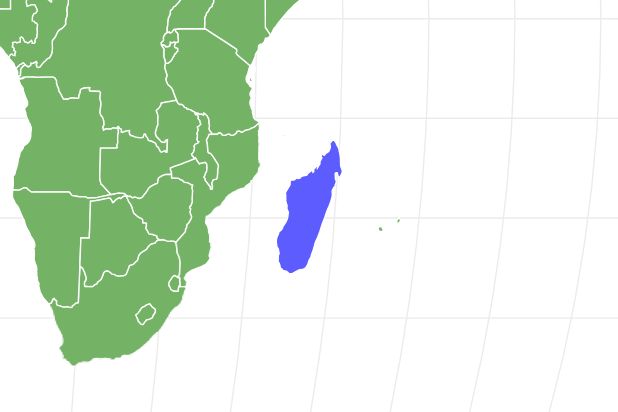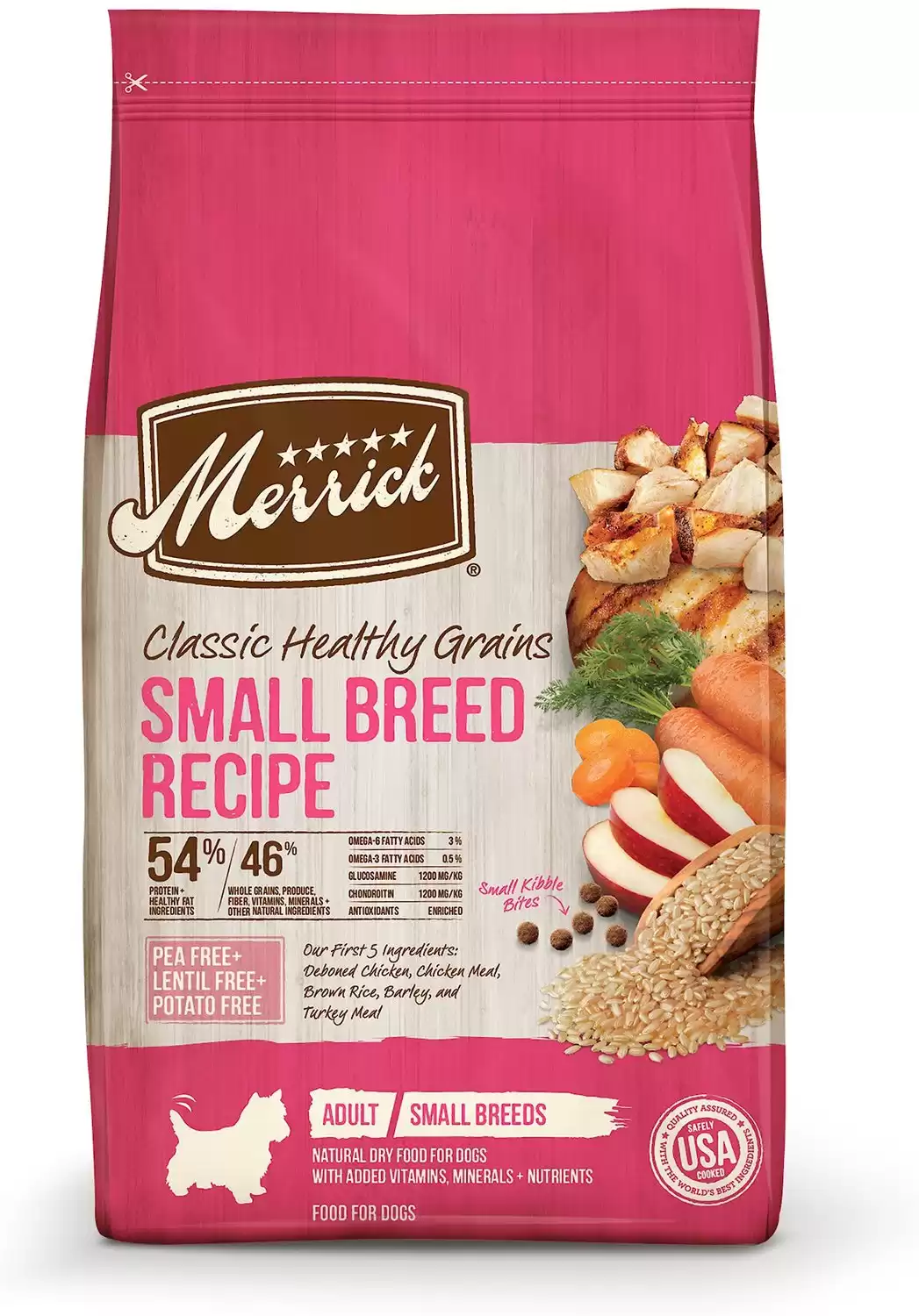Coton de Tulear
Canis lupus
The soft coat of the Coton de Tulear is the result of a singular genetic mutation early in the breed's development.
Advertisement
Coton de Tulear Scientific Classification
- Kingdom
- Animalia
- Phylum
- Chordata
- Class
- Mammalia
- Order
- Carnivora
- Family
- Canidae
- Genus
- Canis
- Scientific Name
- Canis lupus
Read our Complete Guide to Classification of Animals.
Coton de Tulear Conservation Status
Coton de Tulear Facts
- Name Of Young
- Puppy
- Fun Fact
- The soft coat of the Coton de Tulear is the result of a singular genetic mutation early in the breed's development.
- Distinctive Feature
- The breeds coat.
- Litter Size
- 2-5 puppies
Coton de Tulear as a Pet:
- General Health
- Energy Level
- Shedability
- Trainability
- Intelligence
- Tendency to Chew
- Size
- Family and kid friendliness
- Yappiness / Barking
- Moderate
- Hypoallergenic
- Yes
- Separation Anxiety
- High
- Preferred Temperature
- Average climate
- Exercise Needs
- High
- Friendly With Other Dogs
- High
- Pure bred cost to own
- Price ranges from $2,000 to $3,000 dollars
- Dog group
- Non-sporting
- Male weight
- - lbs
- Female weight
- - lbs
This post may contain affiliate links to our partners like Chewy, Amazon, and others. Purchasing through these helps us further the A-Z Animals mission to educate about the world's species.
View all of the Coton de Tulear images!
The cottony soft texture of their coat is thought to be the result of a single genetic mutation during the early years of the breed’s development.
If you are looking for a happy, charming dog, the Coton de Tulear may be the perfect choice for you. Small and sweet, this breed gets along well with children and other pets, is a people-pleaser, and does well with apartment living, as long as he gets some exercise each day.
See all of our expert product reviews.
Developing on the island of Madagascar, the Coton de Tulear was brought to America in 1973. Because of Madagascar’s history of piracy, it is thought that these dogs may have developed for companionship or to hunt rats aboard pirate ships. Regardless of how they developed, they have a long history of providing human companionship, and it shows in their agreeable, highly trainable nature.
The breed is most often white, although they can have markings, such as white and gray, white and yellow, and they can even be tri-colored. Their long life span and loving personality make them wonderful companions.

History Of The Breed

Coton de Tulears are the official dog of Madagascar.
©Katrina Elena/Shutterstock.com
The Coton de Tulear is a rather rare breed that originated in Madagascar around the 16th century and was almost immediately considered a royal dog when they became the favorite pets of the tribal monarchy. Known as the Royal Dog of Madagascar and the official dog of Madagascar, they were popular among the wealthy and there are many legends and folklore associated with their history, especially with how they came to be on the island of Madagascar. They are thought to be descended from the Cotons from Reunion Island and it is said that the ancestor of the Coton de Tulear is the now-extinct Bichon Tenerife, which was possibly brought to the islands by sailors or even pirates.
Health and Entertainment for your Coton de Tulear
- The Best Wet Food for Senior Dogs
- The Best Dog Food for Labrador Retrievers (Senior, Puppy, and Adult)
- These Are the Best Probiotics for Dogs (They Actually Work)
- Victor Senior Healthy Weight Dog Food Review: Recalls, Pros, Cons, and More
- The Best Dog Food for Small Dogs (Puppy, Adult, Senior): Ranked and Reviewed
See all of our expert product reviews.
The Different Types Of Coton de Tulear Mixes
The Coton de Tulear’s winning personality makes it a popular choice for crossbreeding. Some of the more popular crosses include crossing with a Bichon Frise, with the resulting puppies known as Biton, with a Lhasa Apso for Lhasa-Coton, with a Maltese for Cotonese, and with Poodles for Poo-Ton puppies. The Coton de Tulear comes in three accepted colors – white, black and white and tri-color.
3 Pros And Cons Of Owning A Coton de Tulear
| Pros! | Cons! |
|---|---|
| Easy to train | Can be cautious or overly shy if not socialized when young |
| Very light shedder | Can be cautious or overly shy if not socialized when young |
| Uniquely soft coat | Requires frequent grooming |
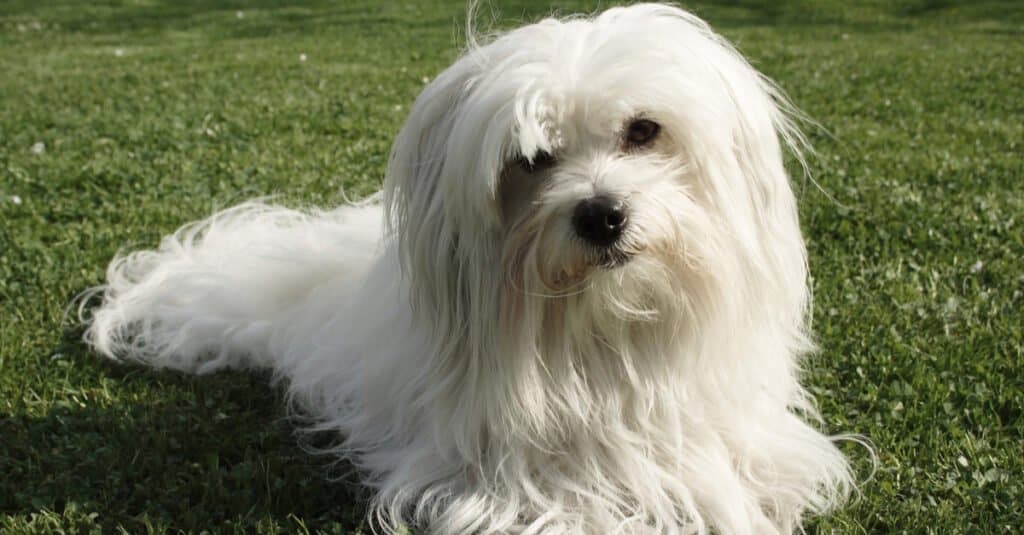
©BORTEL Pavel – Pavelmidi/Shutterstock.com
Size And Weight
The Coton de Tulear is a small dog, but never frail. They are sturdy and athletic. His proportions should create a rectangle, a too-long back or too-short legs are considered faults. Females mature to a height between 9 and 10 inches, while males mature to between 10 and 11 inches. Females mature to between 8 and 13 pounds, while males mature to between 9 and 15 pounds.
| Height (Male): | 11 inches tall |
| Height (Female): | 10 inches tall |
| Weight (Male): | 15 pounds, fully grown |
| Weight (Female): | 13 pounds, fully grown |
Common Health Issues
While the breed is generally hearty, there are a few health issues they are prone to. Skin allergies can lead to issues with their ears or bacterial infections of their skin. They may also develop issues with their eyes, such as progressive retinal atrophy, and joint issues such as hip dysplasia and luxating patella.
Temperament
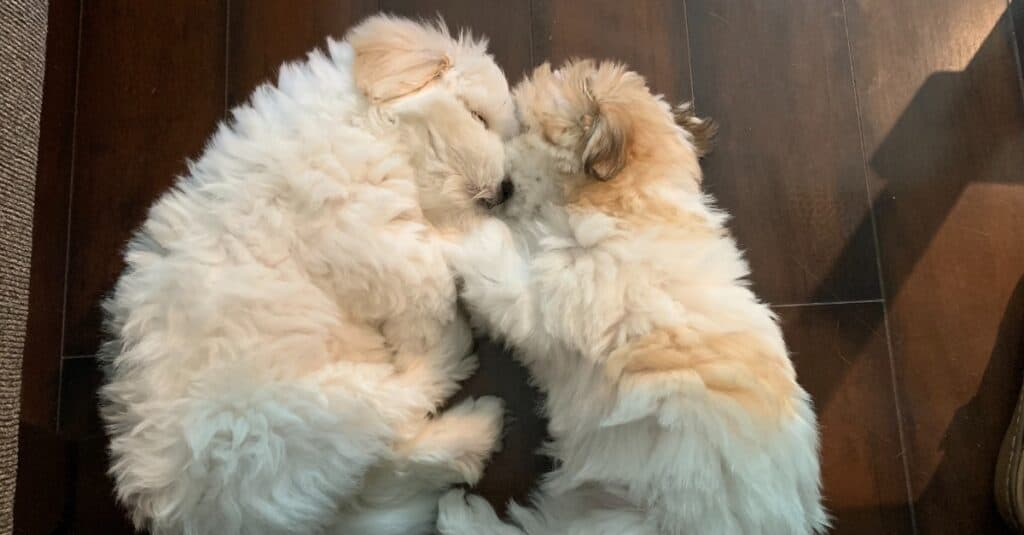
This dog breed is very loving, loyal, gentle and kind.
©iStock.com/Melanie Long
It would be difficult to find a breed more loving and loyal than the Coton de Tulear. Their kind, gentle nature allows them to make fast friends with all family members, including children and other pets.
They are eager to please, making training simple as long as you remain positive. Their kind personality doesn’t respond well to harsh, negative training. If you want others to enjoy your pup as much as you, socialize with your pup from an early age. Without this socialization, your pup may become shy and cautious around strangers.
The breed’s forgiving nature and love for humans make them a great choice for adoption. Regardless of the previous situation, most pups will develop a strong bond with their new family with just a little time and patience.
How To Take Care Of A Coton de Tulear
The Coton de Tulear is a low-maintenance pup as long as you commit to regular grooming. Their people-oriented temperament allows them to fit in easily with your household.
The Best Dog Food For Coton de Tulear Dogs
Plan to feed your pup three meals a day until at least three months old. This helps keep blood sugar levels even and prevents hypoglycemia. Your veterinarian may recommend a low protein or low phosphorus diet for your dog to prevent his kidneys and liver from working too hard.
Our recommendation at A-Z Animals for the best dog food for Coton de Tulear dogs is Merrick Classic Healthy Grains Small Breed Recipe Dry Dog Food.
This turkey and chicken blend offers glucosamine and chondroitin to help sustain strong, healthy joints. Plus, there’s prebiotic fiber, probiotics, and amino acids such as omega-3 and omega-6 fatty acids. All this comes together to cultivate a robust immune system. That way, the occasional skin or ear infection won’t be a big deal.
Follow this link to find Merrick Lil Plates Small Breed Dog Food on Chewy and Amazon.
- Formulated healthy nutrition for small breeds
- Chicken and turkey meal, deboned chicken, and rice recipe
- Grains including quinoa to supports healthy digestion
- Supports healthy hips, joints, skin and coat
Maintenance And Grooming
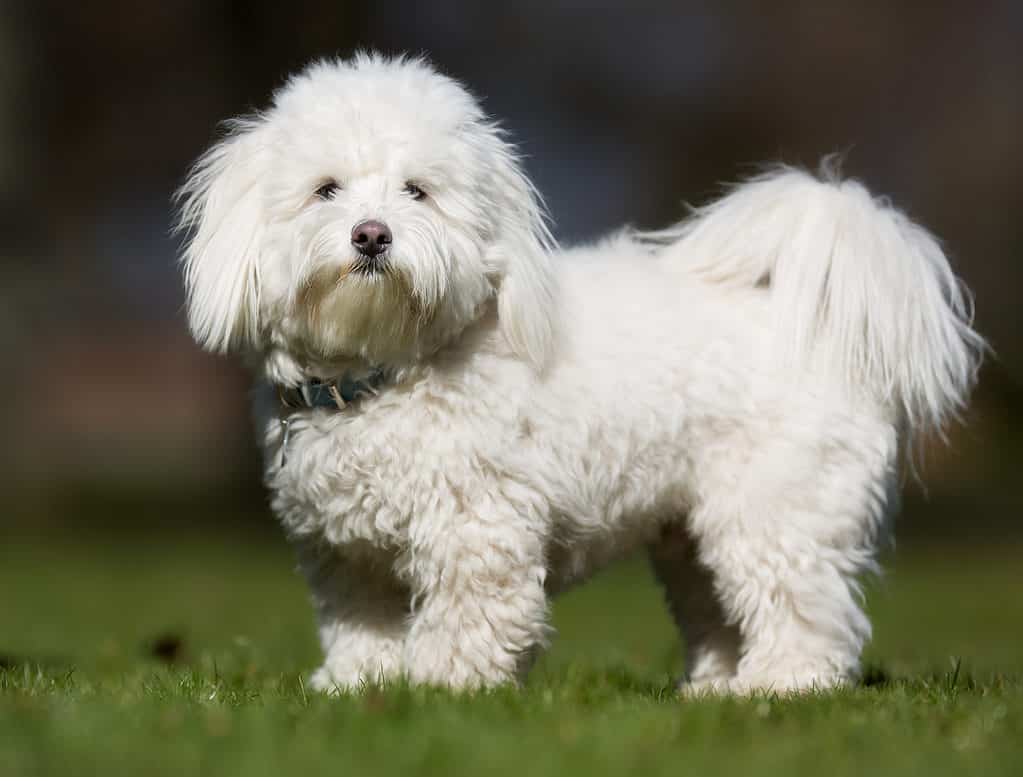
A Coton de Tulear should be brushed daily and while they don’t leave hair around the house, loose hair gets trapped in their coats.
©iStock.com/Bigandt_Photography
Plan on spending a few minutes each day brushing your pup. The Coton de Tulear doesn’t leave hair around the house, making them a great choice for those with allergies, however, loose hair gets trapped in the coat. Without frequent brushing, it is easy for the pup to mat up.
Training
The breed is easy to train as long as you show patience. Your pup will sense frustration, which will cause him to shut down and slow the learning process. In addition to regular obedience training, this breed is quick to learn tricks and relishes performing for its family.
Exercise

Coton de Tulear dogs enjoy activity but don’t require a lot of exercise.
©BIGANDT.COM/Shutterstock.com
The breed enjoys activity but doesn’t require a huge amount of exercise like many larger breeds. Some time spent playing in the yard or on regular walks provides the activity he needs. He will be active in the house, eager to follow you from room to room, keeping you entertained.
Puppies

©Jeanette Dietl/Shutterstock.com
Coton de Tulears generally have between two and five puppies in their litters. The small litter size, as well as the small gene pool, drive up the price of the breed. You may find that puppies or young dogs are more affordable from a rescue.
Coton de Tulear And Children
The Coton de Tulear gets along well with children and is always ready to play. Because the breed is small, it is important to teach your children how to play with the pup gently so he isn’t injured or scared. With care, your children and pup will become best friends.
Dogs Similar To Coton de Tulears
Dog breeds most similar to this breed are the Maltese, Havanese, Bichon Frise, and Bolognese.
Coton de Tulear Vs Maltese
At first glance, the Coton de Tulear and Maltese may appear similar, but several features separate the two breeds. The Maltese are smaller, maturing to between seven and nine inches in height and less than seven pounds. While the Maltese have a coat that often reaches the ground, the Coton de Tulear’s coat, while long, is not long enough to reach the ground. While the Coton de Tulear is a member of the non-sporting family, the Maltese belong in the Toy family.
Famous Coton de Tulears
While there aren’t any famous Coton de Tulears, the breed is loved by celebrities. Famous owners include Barbra Streisand, Jane Fonda, and the late Carrie Fisher.
Popular Names For Coton de Tulears
The most common color for this specific breed is white. This makes the following names most popular:
- Snowball
- Cotton
- Frosty
Coton de Tulear FAQs (Frequently Asked Questions)
What is a Coton de Tulear?
The Coton de Tulear is a small, long-haired breed that developed on the island of Madagascar.
How much does a Coton de Tulear cost?
$2000 to $3000. The high price makes the breed attractive to irresponsible breeders. Work with a trustworthy breeder or reputable rescue to ensure you get a healthy, happy pup.
Do Coton de Tulear dogs bark a lot?
They can bark and howl a lot if left alone. Spend plenty of time with your pup and provide exercise to reduce separation anxiety. A rescue dog may have some nervous habits such as barking or howling after adoption, but with exercise and attention, the breed is remarkably easy to live with.
How rare is a Coton de Tulear?
The Coton de Tulear is a rare breed and has faced extinction multiple times. It is important to get your pup from a reputable breeder or rescue.
How do I pronounce Coton de Tulear?
Ko-tone Dih Too-lay-are.
How big does a Coton de Tulear get?
The Coton de Tueler matures to about one foot tall at the shoulder and 15 pounds or less.
Are Coton de Tulear dogs good with kids?
This breed can be an excellent dog for kids. Because of their small size and willing personality, it is important to show children how to behave around the pup to avoid injury and prevent your pup from becoming frightened.
How long do Coton de Tulear dogs live?
The breed is long-lived, with a life span between 14 and 17 years. Their long life span makes owning the breed a commitment. You may find older dogs available for adoption looking for a safe home to live out their years.
What's the difference between the Coton De Tulear and the Bichon Frise?
The Bichon Frise is slightly larger than the Coton De Tulear, though the Coton De Tulear has a slightly longer lifespan than the Bichon Frise. These two dog breeds also have different types of fur, though they are equally soft!
What's the difference between the Coton De Tulear and the Havanese?
The Coton De Tulear comes in fewer colors compared to the Havanese. Additionally, the Havanese was originally bred for companionship, while the Coton De Tulear was originally bred for hunting rodents.
Thank you for reading! Have some feedback for us? Contact the AZ Animals editorial team.
Sources
- American Kennel Club, Available here: https://www.akc.org/dog-breeds/coton-de-tulear/
- American Coton Club, Available here: https://americancotonclub.com/history.htm

